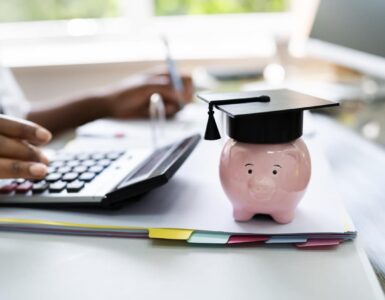Here’s What We Know
The Biden Administration announced a program to forgive federal student loans of up to $20,000 for millions of Americans. But not everyone with student loans will qualify for this forgiveness program.
The White House outlined the Student Loan Relief program in this briefing:
To provide more breathing room to America’s working families as they continue to recover from the strains associated with the COVID-19 pandemic, President Biden announced a three-part plan.
- 1. Provide debt relief to address the financial harms of the pandemic.
- 2. Make the student loan system more manageable for current and future borrowers by cutting monthly payments in half for undergraduate loans and fixing the Public Service Loan Forgiveness (PSLF) program to work toward loan forgiveness.
- 3. Protect future students and taxpayers by reducing the cost of college and holding schools accountable when they hike up prices.
You can read all the details in the full White House briefing here.
Loans That Qualify
First things first, the student loan forgiveness program only applies to federal student loans.
Private student loans from a financial institution, like a bank or credit union, or a loan funded through the school, do not qualify for this loan forgiveness program.
- Note: If you are not sure if your student loans are federal or private, you can check the Department of Education’s “Who is my loan servicer?” site for more details.
If you have federal student loans, the U.S. Department of Education is your lender. The federal student loan program is known as the William D. Ford Federal Direct Loan Program.
There are four types of federal direct loans:
- Direct Subsidized Loans
- Direct Unsubsidized Loans
- Direct PLUS Loans (for parents)
- Direct PLUS loans (for graduate or professional students)
- Direct Consolidation Loans
If you have a federal student loan you may qualify for loan forgiveness, if you meet the income requirements listed below.
Loan Forgiveness Income Requirements
This program is intended to help those with the greatest need, which according to the administration is “working families.” This is how the Department of Education outlines debt cancellation eligibility.
- “To be eligible, your annual income must be below $125,000 (for individuals) or $250,000 (for married couples or heads of households).
- If you received a Pell Grant in college and meet the income threshold, you will be eligible for up to $20,000 in debt cancellation.
- If you did not receive a Pell Grant in college and meet the income threshold, you will be eligible for up to $10,000 in debt cancellation.”
For more answers to frequently asked questions visit The Biden-Harris Administration’s Student Debt Relief Plan Explained.
Next Steps for Qualified Loan Borrowers
If you have a federal student loan and meet the income requirements there are a few things you can do to help make the process run smoothly.
- Update your information. Log in to your student loan service provider account with your FSA ID to update your personal information so that they may contact you about updates, information, and important dates regarding your loans and loan forgiveness. Visit StudentAid.gov to stay up to date with the student loan forgiveness process.
According to Federal Student Aid, “Nearly 8 million borrowers may be eligible to receive relief automatically because relevant income data is already available to the U.S. Department of Education.”
- Mark November 15th on your calendar. The U.S. Department of Education announced that a simple federal student loan forgiveness application will be available by early October 2022. Student loan borrowers must complete that application before November 15, 2022, to receive debt relief. To be notified when the application is available, please sign up for alerts on the Department of Education Subscription Page.
Next Steps for Other Loan Borrowers
If you do not meet the federal loan forgiveness requirements, there are still options to help you manage your student loan debt.
- Deferment or Forbearance. The economy has been tough over the past few years and many people are struggling to keep up with their student loan payments. Good news! Your loan servicer may have some relief options to temporarily postpone payments with forbearance or deferment. Talk with your lender to see how they can help.
- Refinance. Private student loans don’t qualify for loan forgiveness, but you can refinance your student loans to lower your monthly payments. Check with your loan provider for options, rates, and refinancing programs that fit your budget.
Bottom Line
While there are still details to be announced, it’s pretty clear who will qualify for federal student loan forgiveness. It is important to stay up to date by following the Department of Education and signing up for alerts to get timely relevant information about the next steps. And all is not lost for private student loan borrowers. Your bank or credit union may have many options and programs to help. Set up a time to talk with an advisor on how to best manage your student loans.






